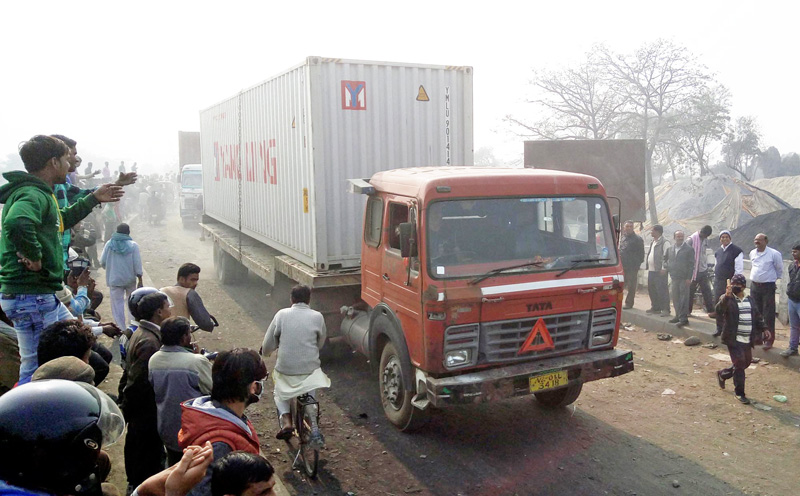Despite hassles, traders stick to Kolkata port
Kathmandu, November 15
Despite numerous hassles and inefficiencies at Kolkata port, Nepali importers have not shown any willingness to shift to the Visakhapatnam (Vizag) port, which could be more predictable and efficient for Nepali traders.
According to the Ministry of Commerce (MoC), it has been over a year since the country was allowed to conduct export-import trade to and from third countries through Vizag port. However, in the last one year, trains carrying Nepal-bound cargo containers have come to the Inland Clearance Depot (ICD) in Birgunj only five times and delivered a total of 450 containers to Nepal.
Congestion at the Kolkata port has been adversely affecting Nepali traders as containers pile up there for long due to lack of adequate rail movement to Nepal, thus resulting in high detention and demurrage charges. A glaring instance was seen recently when Nepal-bound cargo containers were held up at Kolkata port from mid-September to mid-November, until the Container Corporation (CONCOR) of India doubled the weekly rail movement to Nepal to clear the Nepal-bound cargoes.
Despite the hassles, unpredictability and high unforeseen costs, traders still prefer Kolkata port, said Ravi Shanker Sainju, spokesperson for MoC. “Earlier, Kolkata port was the only gateway port for Nepal’s export-import trade but now we have an alternative port which provides more efficient service.”
MoC has also urged traders to opt for Vizag port citing the congestion at the Kolkata port. “Nepal’s third-country trade has been increasing and the Kolkata port will not be able to cater effective service to Nepal in the coming years.”
The cost of transporting cargo by road from Kolkata to Birgunj and transporting cargo by train from Vizag to Birgunj is more or less similar, informed RB Rauniyar, director of Himalayan Terminal Pvt Ltd — a Nepal-India joint venture for terminal management in ICD Birgunj.
Currently, around 40 per cent of third-country imports are transported via road from Kolkata to Nepal. On the other hand, unforeseen cost of trade like detention and demurrage charges are high in Kolkata.
Former commerce secretary Purushottam Ojha has said that the Vizag port could be a better option for traders because trade through Vizag will be more predictable. Citing that the Kolkata port is the ‘most inefficient’ port in the world, Ojha said that the government had negotiated with the government of India for another gateway port eyeing Nepal’s expanding third-country trade.
One of the shipping firms, Maersk Line, has been providing multimodal bill of lading (which is also known as combined bill of lading) facility to traders, which means the company takes full responsibility of the cargo from the port of origin to the destination port (Birgunj). So, traders do not need to deal with the transit port, that is Vizag port. Vizag port lies in Andra Pradesh of India and is 1,436 kilometres far from Birgunj, whereas Kolkata in West Bengal is at a distance of 704 kilometres from Birgunj.
The MoC has said that trade through Vizag could be easier as the efficiency of the port is high and reduction in ocean freight cost and predictability of the cargo delivery might meet the difference of transporting cargo via rail from Kolkata to Birgunj.
Ocean freight cost to bring cargo is quite high because cargoes need to be transhipped from the mother vessel to feeder vessel in Singapore while bringing the goods via Kolkata port. The same case applies in export of cargoes that need to be transhipped from feeder vessel to large vessel in Singapore. This is because the Kolkata port is a
riverine port and can only serve feeder vessels.
However, Vizag port can serve mother vessels and it will be more feasible for bulk cargo imports like iron ore, clinker and coal, among others, according to officials.






